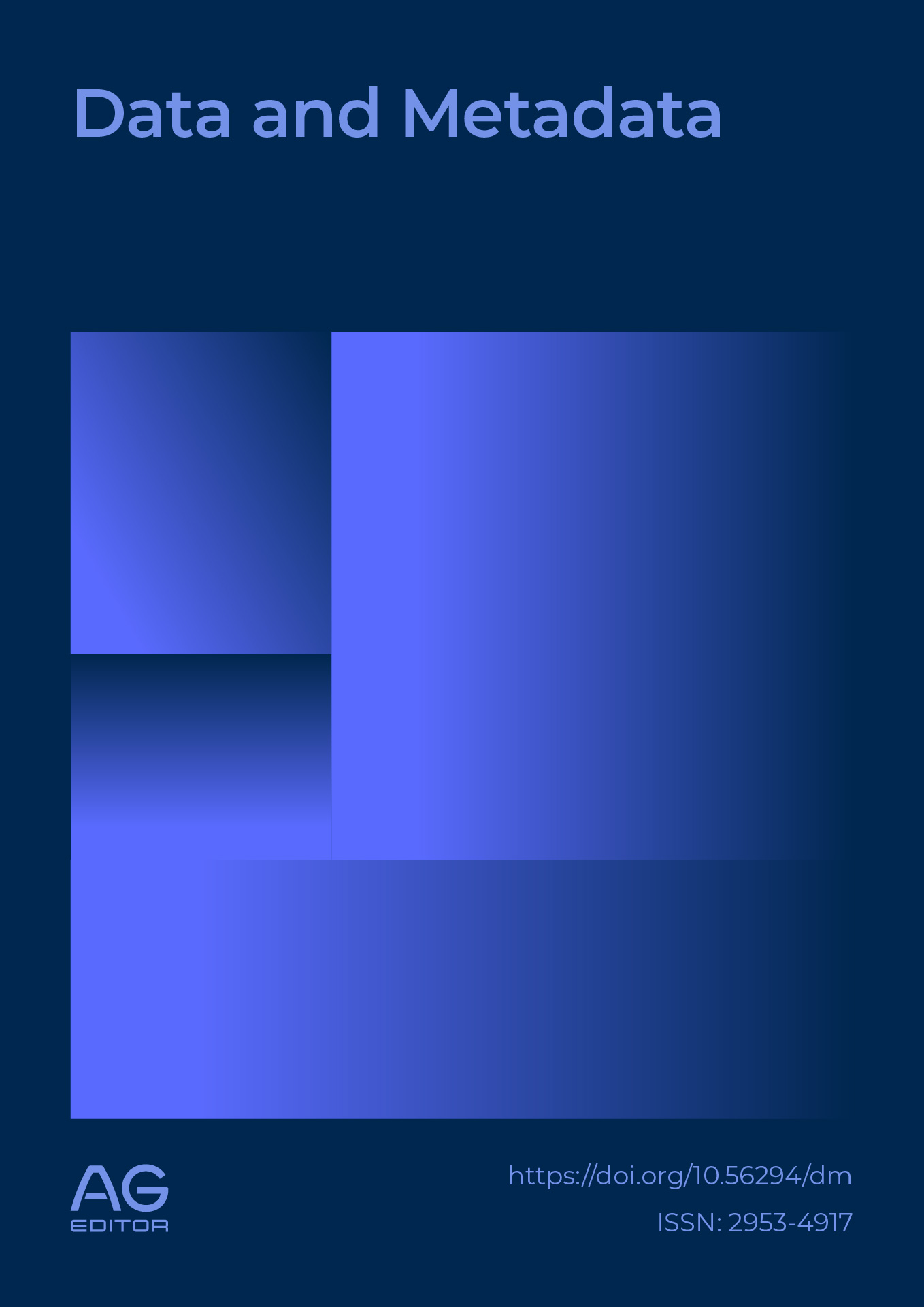Integrating AI and Statistical Models for Climate Time Series Forecasting
DOI:
https://doi.org/10.56294/dm2025893Keywords:
climate change, time series analysis, LSTM, ARIMA, SARIMA, forecasting, temperature predictionAbstract
Climate change is a pressing global challenge, and predicting its future patterns is essential for mitigation strategies. This study integrates synthetic and real-world climate datasets to develop predictive models. Specifically, we apply Long Short-Term Memory (LSTM) networks alongside ARIMA and SARIMA models to forecast global temperature anomalies. Synthetic data were generated using a Gaussian-based data simulator calibrated on historical NOAA/IPCC data, contributing 30% of the training set. Validation included Kolmogorov-Smirnov tests to ensure distributional similarity to real data. Preprocessing involved interpolation for missing values and stationarity checks using the Augmented Dickey-Fuller (ADF) test (p < 0.05), with differencing of order one applied where necessary. LSTM model architecture included two hidden layers with 64 and 32 units, sequence length of 30 days, and a dropout rate of 0.2 to prevent overfitting. Model performance was evaluated using RMSE, MAE, and MAPE. LSTM achieved the lowest RMSE of 1.8 and MAPE of 6.3%, outperforming ARIMA (RMSE: 2.4, MAPE: 8.2%) and SARIMA (RMSE: 2.0, MAPE: 7.1%). Random Forest and SVR models yielded RMSEs of 2.2 and 2.3, respectively, and were included for benchmarking. A Monte Carlo simulation with 10,000 iterations and normal distribution assumptions estimated prediction uncertainty, aligned with IPCC emission scenarios. Scenario-based forecasting (A: status quo, B: 50% emissions cut, C: net-zero) was validated against past reductions post-Kyoto and Paris agreements. Forecasts indicate a potential 1.5°C rise in temperature by 2050 under Scenario A. Compared to baseline mean anomaly of 14.3°C, this reflects a significant trend.
References
Z. Anastasiadou and B. López-Cabrera, "Statistical Modelling of Temperature Risk," 2012. https://doi.org/10.18452/4402
A. M. Greene, L. M. Goddard, and J. W. Hansen, "A framework for the simulation of regional decadal variability for agricultural and other applications," 2011.
Y. R. Wang, D. O. Hessen, B. H. Samset, and F. Stordal, "Evaluating global and regional land warming trends in the past decades with both MODIS and ERA5-Land land surface temperature data," Remote Sensing of …, 2022. https://doi.org/10.1016/j.rse.2022.113181
N. Akhtar, M. I. Syakir Ishak, S. A. Bhawani, and K. Umar, "Various natural and anthropogenic factors responsible for water quality degradation: A review," Water, 2021. DOI: 10.3390/w13192660
S. E. Pacheco, G. Guidos-Fogelbach, "Climate change and global issues in allergy and immunology," Journal of Allergy and Immunology, Elsevier, 2021. DOI: 10.1016/j.jaci.2021.10.011
Y. Lai and D. A. Dzombak, “Use of integrated global climate model simulations and statistical time series forecasting to project regional temperature and precipitation,” Journal of Applied Meteorology and Climatology, vol. 60, no. 5, pp. 695–710, May 2021. DOI: 10.1175/JAMC-D-20-0204.1.
Abd Aliwie, A. N. (2025). Conversational Silence in Harold Pinter’s The Birthday Party: A Pragmatic Perspective. International Journal of Arabic-English Studies. https://doi.org/10.33806/ijaes.v25i2.860
Y. Zhang et al., "Enhancing Precipitation Forecasting Using Random Forest Models," Climate Machine Learning Advances, 2020. https://doi.org/10.3390/app14135769
Q. Liu et al., "Extreme Weather Prediction with XGBoost: A Case Study," Weather and Climate Computing, 2021. DOI: 10.4209/aaqr.2019.08.0408
X. Chen et al., "Leveraging LSTM Networks for Daily Temperature Forecasting," Deep Learning in Meteorology, 2021.
V. Kumar et al., "Hybrid ARIMA-LSTM Models for CO₂ Forecasting," Advances in Hybrid Machine Learning, 2022. https://doi.org/10.1016/j.heliyon.2023.e21241
S. Rao et al., "Multi-scale Climate Pattern Detection with Wavelet-LSTM Models," Journal of Advanced Climate Studies, 2023.
C. A. Jacobs and S. J. Worley, "Data Curation in Climate and Weather: Transforming Our Ability to Improve Predictions through Global Knowledge Sharing," 2009. DOI: 10.2218/ijdc.v4i2.94
[14] D. Wuebbles, "Observational datasets used in climate studies (APPENDIX A)," 2017.
S. Fu, Z. Zhu, and R. Lu, "Changes in the factors controlling Northeast Asian spring surface air temperature in the past 60 years," Climate Dynamics, 2023. DOI: 10.1007/s00382-022-06569-7
M. Bennedsen and E. Hillebrand, "A multivariate dynamic statistical model of the global carbon budget 1959–2020," Journal of the Royal, 2023. DOI: 10.1093/jrsssa/qnac014
Z. A. Ramadhan, B. K. Mohammed, and A. H. Alwaily, “Design and implement a smart traffic light controlled by internet of things,” Period. Eng. Nat. Sci., vol. 9, no. 4, pp. 542–548, 2021. DOI: 10.21533/pen.v9i4.2351
M. Khalaf, H. Najm, A. A. Daleh, A. Hasan Munef, and G. Mojib, “Schema Matching Using Word-level Clustering for Integrating Universities’ Courses,” in 2020 2nd Al-Noor International Conference for Science and Technology (NICST), Baku, Azerbaijan: IEEE, Aug. 2020, pp. 1–6. doi: 10.1109/NICST50904.2020.9280318.
R. R. Nuiaa et al., “Enhanced PSO Algorithm for Detecting DRDoS Attacks on LDAP Servers.,” Int. J. Intell. Eng. Syst., vol. 16, no. 5, 2023. DOI: 10.22266/ijies2023.1031.61
M. C. Wimberly, K. M. de Beurs, T. V. Loboda, and W. K. Pan, "Satellite observations and malaria: new opportunities for research and applications," Trends in parasitology, 2021. https://doi.org/10.1016/j.pt.2021.03.003
H. Najm, M. S. Mahdi, and W. R. Abdulhussien, “Lightweight Image Encryption Using Chacha20 and Serpent Algorithm,” J. Internet Serv. Inf. Secur., vol. 14, no. 4, pp. 436–449, Nov. 2024, doi: 10.58346/JISIS.2024.I4.027.
H. Najm, H. K. Hoomod, and R. Hassan, “A proposed hybrid cryptography algorithm based on GOST and salsa (20),” Period. Eng. Nat. Sci. PEN, vol. 8, no. 3, pp. 1829–1835, 2020. doi:10.21533/PEN.V8I3.1619
H. Najm, H. K. Hoomod, and R. Hassan, “A New WoT Cryptography Algorithm Based on GOST and Novel 5d Chaotic System,” Int. J. Interact. Mob. Technol. IJIM, vol. 15, no. 02, p. 184, Jan. 2021, doi: 10.3991/ijim.v15i02.19961.
Downloads
Published
Issue
Section
License
Copyright (c) 2025 Bahaa Kareem Mohammed, Dhurgham Kareem Gharkan, Hassan Hadi Khayoon (Author)

This work is licensed under a Creative Commons Attribution 4.0 International License.
The article is distributed under the Creative Commons Attribution 4.0 License. Unless otherwise stated, associated published material is distributed under the same licence.



